Fast-growing thuja: varieties for hedges in the country
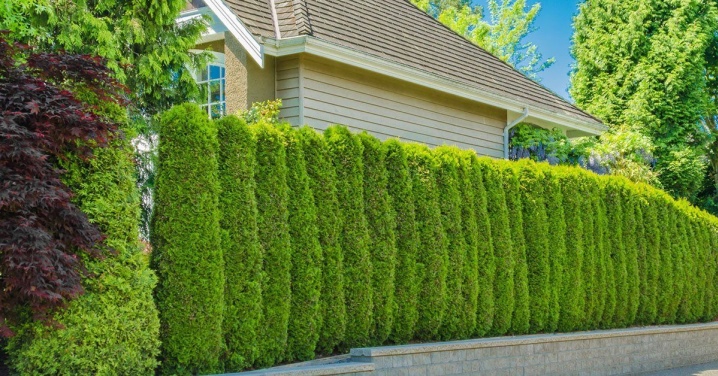
Conifers are the favorites of many landscape designers. But sales statistics show that thuja is the undisputed leader. It is quite unpretentious, retains decorative effect in winter, therefore it is often used to create hedges.

Plant features
The thuja genus comes from North America. The advantages of these plants for garden design are undeniable:
- undemanding care;
- frost resistance;
- preservation of decorativeness throughout the year;
- ease of pruning;
- pleasant aroma;
- variety of forms;
- longevity.
The most suitable for the European climate are thuja western and folded, numerous varieties of which are now used.
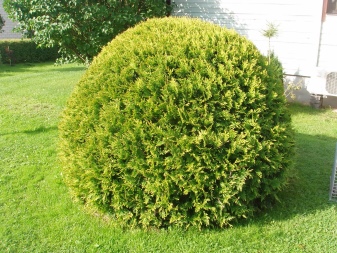
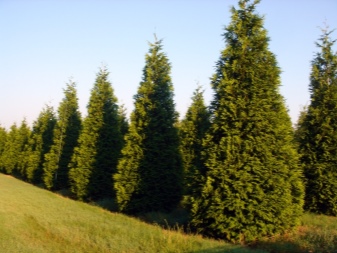
Tall varieties
A living wall is one of the most effective ways to disguise unattractive fences and enclose an area. Tall thujas are perfect for this, creating a noble, solemn, year-round decorative fence.
And to make such a hedge look interesting and not boring, designers advise to alternate varieties with different colors of needles when planting.
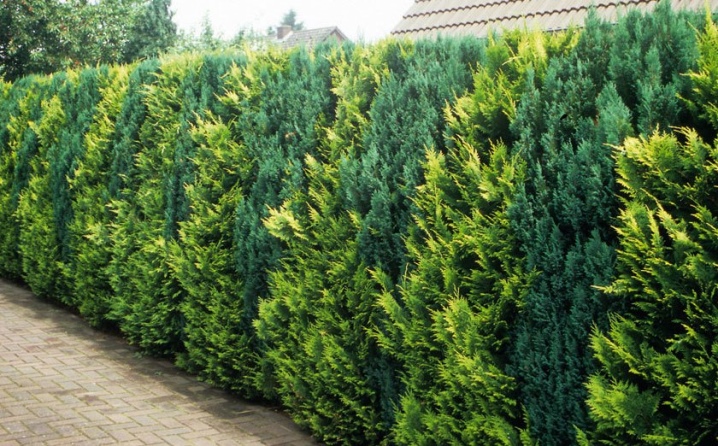
Green
Brabant - a widespread tall variety, can reach 15-20 m in height, 5 m in width. It is a fast-growing slender tree, with an annual growth of about 30 cm.
But when buying a thuja of this variety, you need to take into account that they do not tolerate drought well and are sensitive to the soil.
On heavy soils, Brabant does not take root very well and grows slowly.
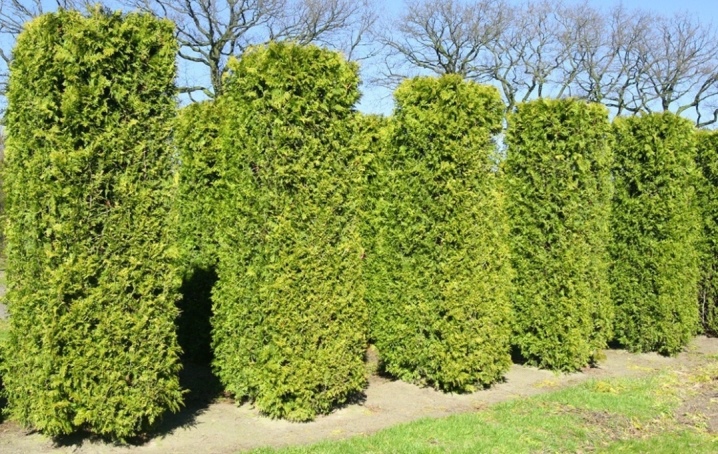
Smaragd - a variety with dark emerald needles that retain their color throughout the year. The tree grows relatively slowly (up to 10 cm per year), maximum parameters: height - 5 m, width - 1.8 m. Such a thuja is a neat high pyramid. Despite the small annual growth rate, this variety is popular especially among novice gardeners for its resistance to adverse weather conditions and mistakes in maintenance.
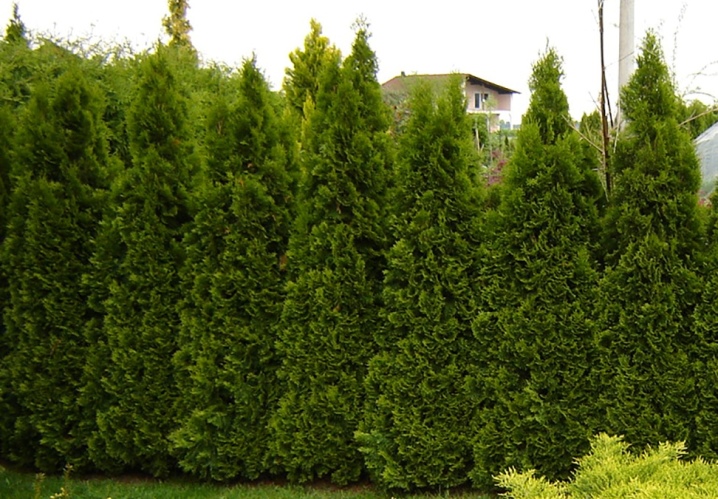
Name Columna speaks for itself, this is a tall tree with dense needles, in the shape of a column. It does not grow very quickly (about 15 cm per year), but it can reach 5 m.The width of an adult plant reaches about 1.5 m.
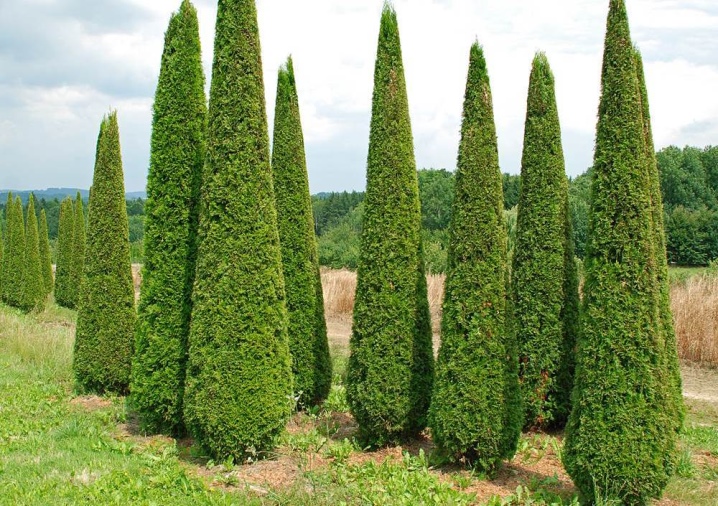
Spiralis - tall (up to 10 m) fast-growing variety with bluish-green loose needles. Slightly twisted shoots, located on the trunk in a spiral. The shape of the crown is pin-shaped.
Thuja Kornik Is a columnar tree that grows rather quickly. It grows up to 3 m (diameter - 1.5 m).
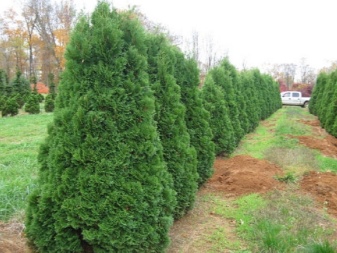
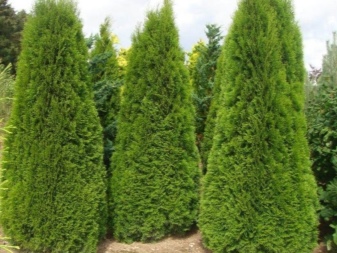
Golden
The Aurescens variety is distinguished by delicate golden yellow needles, which, when blooming, have an orange tint. The crown of the tree is dense, conical in shape. Aurescens grows rapidly, the adult thuja reaches 8 m, while the diameter is slightly more than a meter.
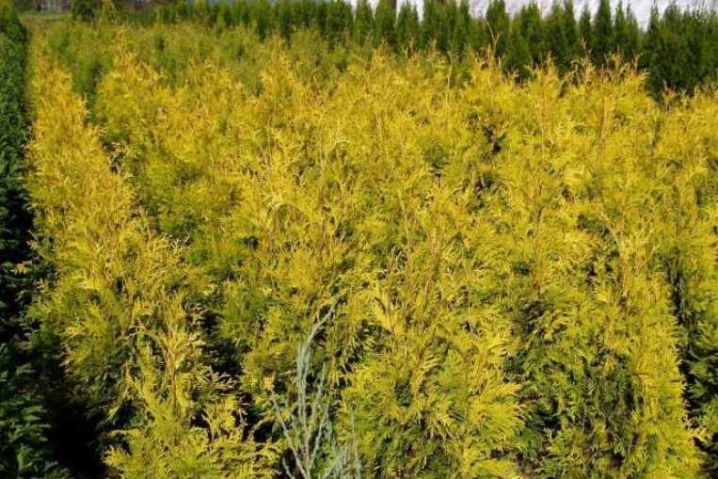
Europe Gold is not very tall, the tree grows up to 3 m. Growth during the year is relatively small - about 10 cm. Thuja has a compact pyramidal crown and picturesque yellow needles.
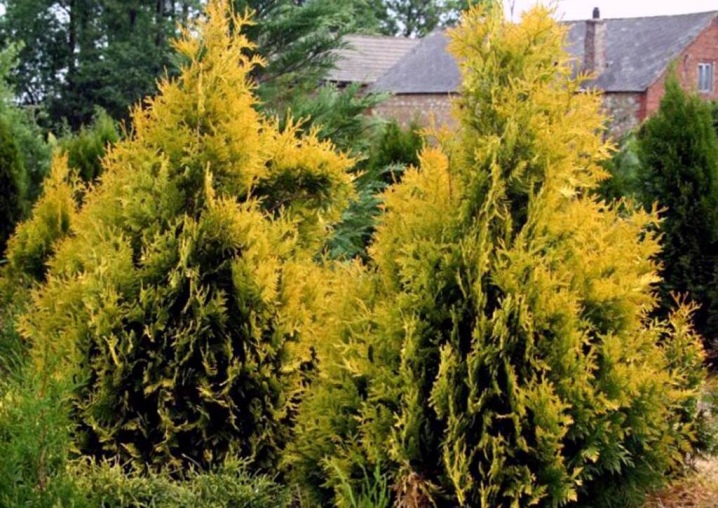
Variegated
Aurea Variegata is a fast-growing variety that grows by 30 cm per year and 20 cm in width.
Thuja of the Zebrina variety resembles a loose haystack, so the fence of such trees must be carefully monitored and trimmed in time. Plants tolerate pruning well, but for some time they lose their beautiful variegated color. These thuja grow up to 15 m.
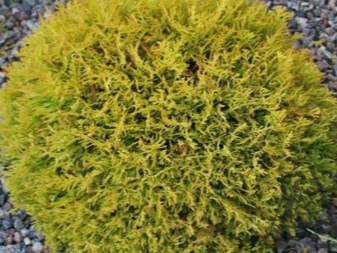
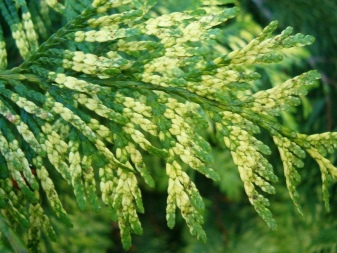
The most frost-resistant
For the conditions of central Russia, in particular, the Moscow region, the frost resistance of plants is one of the decisive factors. All of these varieties are quite capable of overwintering in the Russian climate., but in this case it is important that the decorativeness of the plantings is preserved.
Therefore, we note that the varieties Kornik and Zebrina belong to folded thujas, which are more sensitive to frost than western ones.
These plants can freeze a little in winter, although in the future they recover quickly, the appearance of the hedge at this time suffers somewhat.
The champion in unpretentiousness and frost resistance is Smaragd, for this he is forgiven for slowness in growth. The rest of the varieties are also highly resistant to frost.
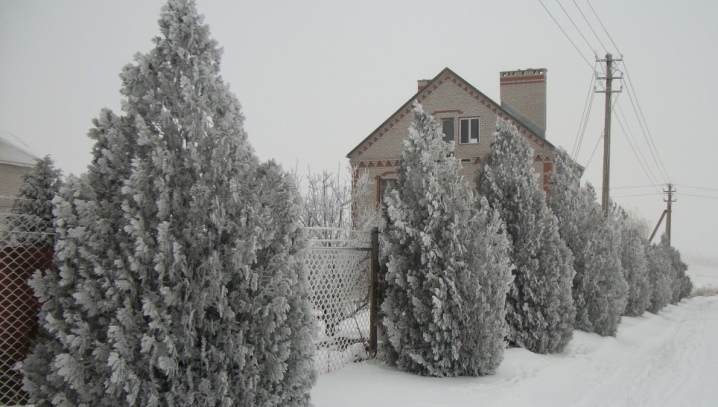
Care
To make a living wall look beautiful, it is first of all important to observe the correct distance between trees when planting. If the thuja will go in one row, 1 m is enough, if the hedge is two-row - 2 m.It is necessary to take into account the possible diameter of an adult plant. For varieties that are especially wide in the crown, 5 m may be useful.

Most thujas are not particularly demanding for soils, but they prefer a fairly moist soil. Therefore, after planting, they need watering, they need 10 liters of water per tree once a week. In dry weather, the rate and amount of watering doubles. Sprinkling will also not be superfluous, but it should be carried out only after sunset.
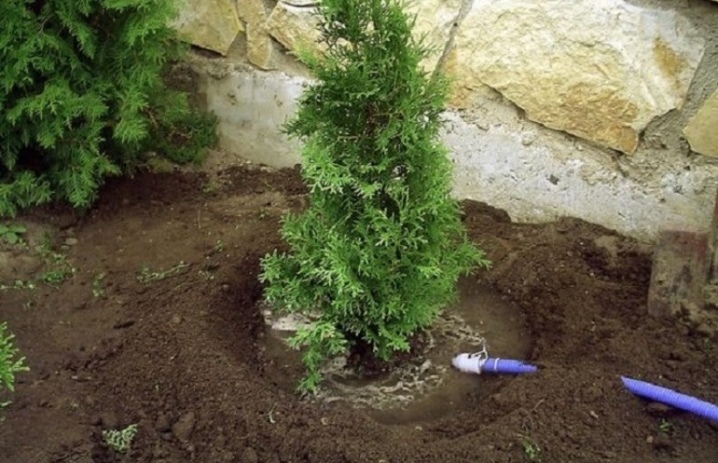
If fertilizers were applied during planting, then fertilizing in the next 2 years will not be required. It is recommended to mulch the ground in the near-trunk circles. In the first and second winter, thuja need to be protected from mid-January to February 10 with covering material. And in the spring, sanitary pruning should be carried out to cleanse the plants of dried shoots.
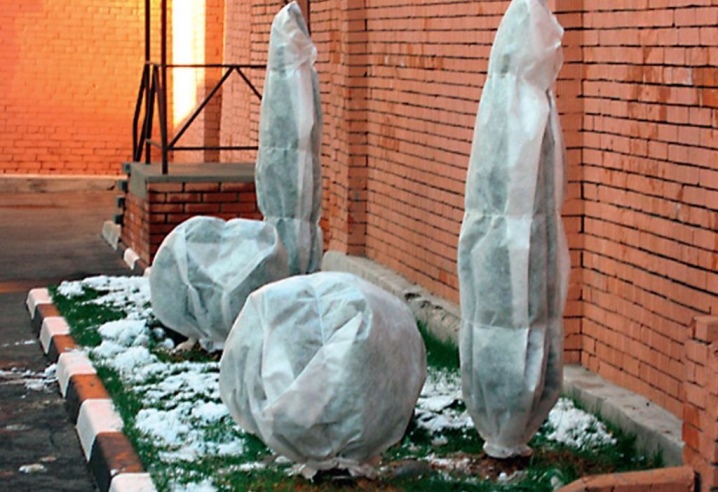
Subject to these simple techniques, a wall of thuja will serve as a shelter for your dacha from prying eyes and at the same time decorate the site for many years. A with the skills of topiary shearing from these plants, you can even create a fortress wall with battlements and loopholes, which will become a real piece of landscape art.

You can get acquainted with useful tips on the selection of thuja for a hedge in the following video.



































































The comment was sent successfully.